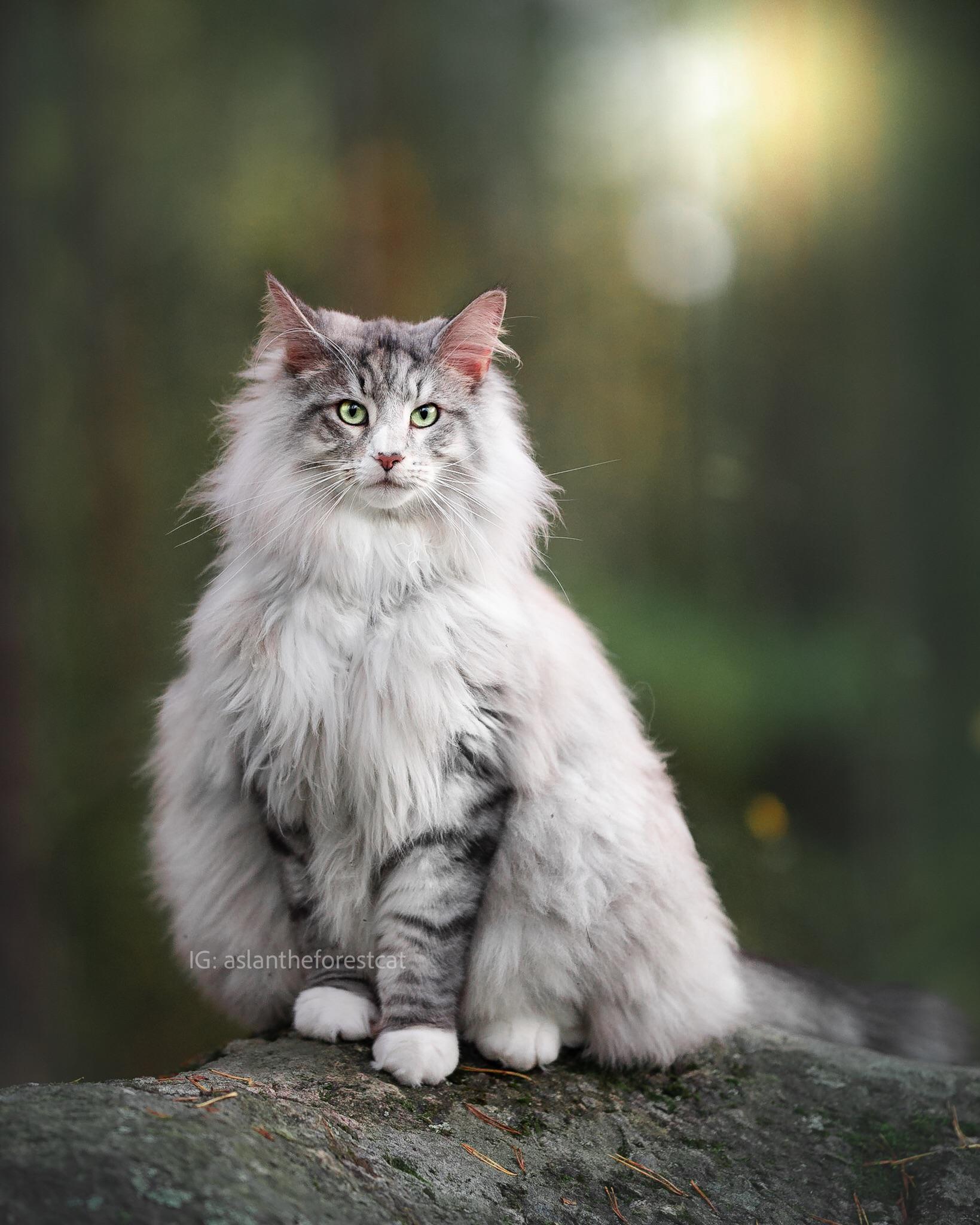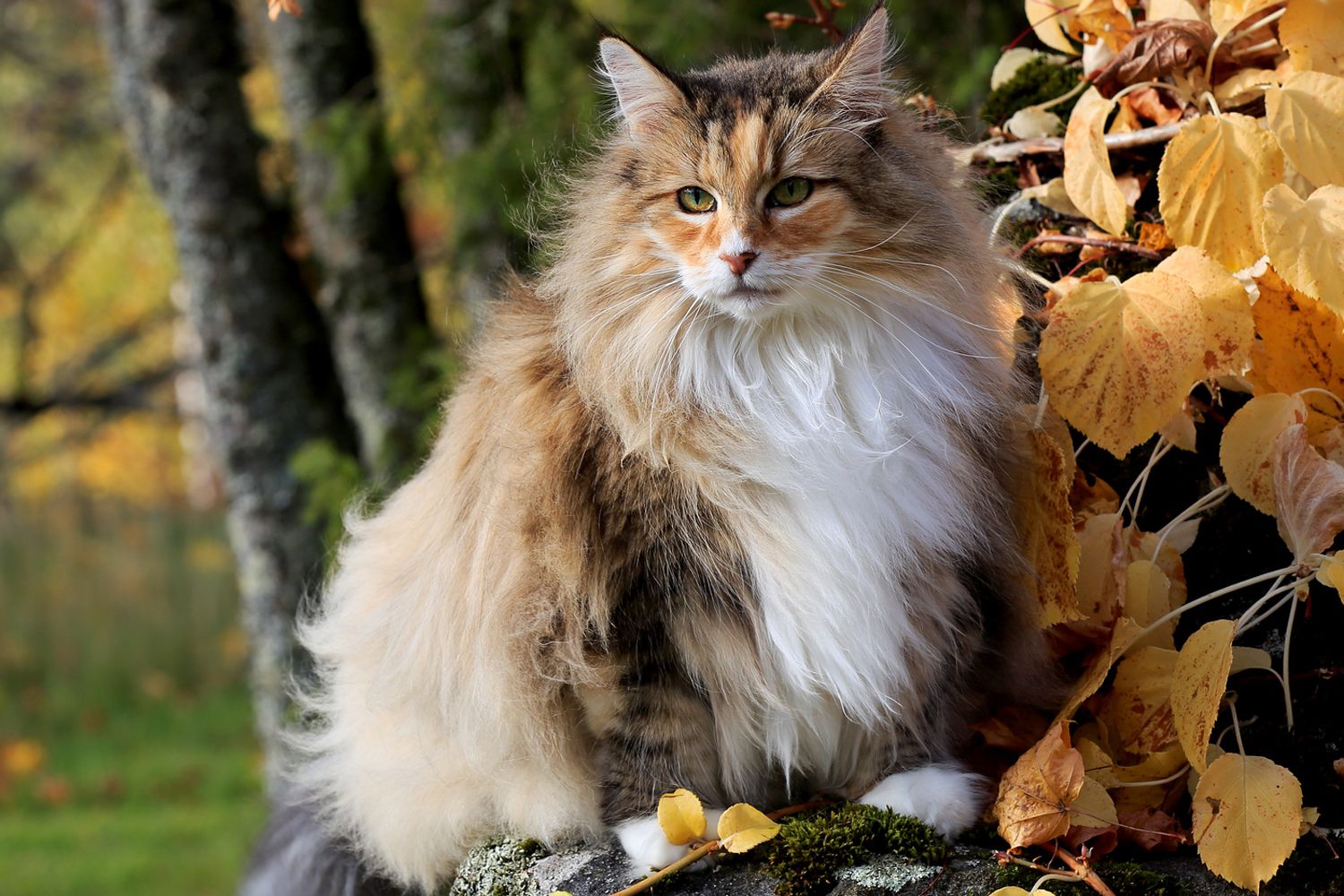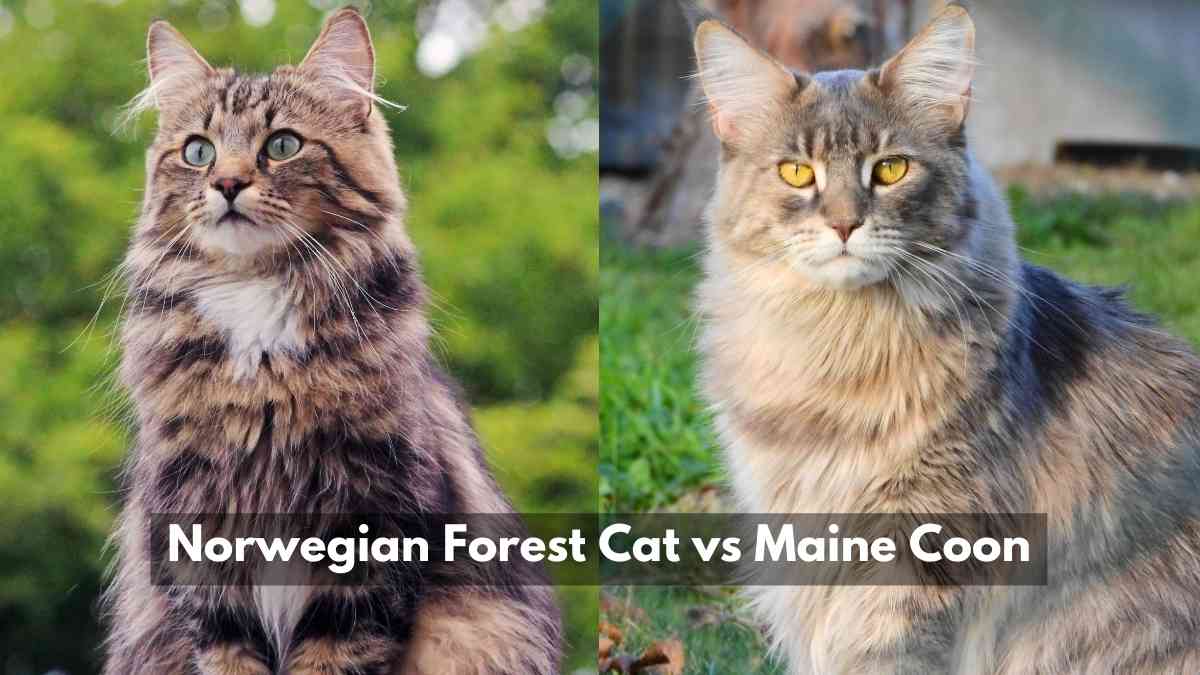To determine if you have a Norwegian Forest Cat, observe their physical traits and behavior. Characteristic features include a large, sturdy build, long fur, and a bushy tail.
Norwegian Forest Cats are known for their distinctive appearance and endearing personality traits. This breed is robust and well-suited for colder climates, identifiable by their thick, water-resistant coats, tufted ears, and bushy tails. These cats tend to be friendly, playful, and enjoy climbing, indicative of their evolutionary adaptation to the Scandinavian forests.
They exhibit great patience and a gentle temperament, often forming strong bonds with their families. Their large almond-shaped eyes, coupled with a strong jawline, give them a striking, wild look reminiscent of their feral ancestors. Recognizing a Norwegian Forest Cat involves paying attention to these attributes, alongside considering their lineage if documentation is available.
The Origins Of The Norwegian Forest Cat
Embark on a journey back in time to discover the majestic Norwegian Forest Cat. With a luxurious coat and a rugged appearance, this breed has a history as captivating as its looks. To fully understand this feline, let’s delve into its storied past.
A Glimpse Into Viking History
Norwegian Forest Cats sail into history with the Vikings. Over a thousand years ago, these cats served as mousers on Viking ships. Their thick coats protected them from harsh Scandinavian winters.
Legends surround these felines. Some tales link them to the Norse goddess Freya. This association knits them into the fabric of Norse mythology.
The Evolution Of The Breed
Norwegian Forest Cats evolved from natural selection. Over centuries, only the fittest survived Scandinavian harsh conditions. This resulted in their characteristically dense coats and sturdy builds.
- Survival: Adaptations to cold are evident in their tufted ears, long tails, and water-resistant fur.
- Pedigree: Recognition as an official breed came in the 20th century.
Today, these cats are cherished for their friendly nature and striking features. They continue to capture hearts worldwide, holding a special place as a beloved pet.
Physical Characteristics Of A True Norwegian
The Norwegian Forest Cat, known affectionately as the “Wegie,” stands out for its glorious mane and sturdy build. If you suspect your furry friend might hail from the forests of Norway, certain physical traits will give you a clue. Let’s explore these telltale features to help determine if you’re indeed sharing your home with a true Norwegian!
The Majestic Coat
Norwegian Forest Cats boast a thick, lush double coat designed to withstand harsh winters. Look for long, water-repellent top hairs and a dense, woolly undercoat. Seasonal changes dramatically affect their coat; they flaunt a luxurious mane in winter, with tufts of hair peeking out from their ears and between their toes, while in summer, their coat becomes sleeker.
Distinctive Facial Features
- Broad head with a strong chin
- Triangular-shaped face aligns with their ears
- Large, expressive eyes that can be green, gold, or copper
- Straight profile with no break in the nose
- Furry ears, often with lynx-like tips
Body Structure And Size
Norwegian Forest Cats are undeniably robust and muscular. These cats are among the larger breeds, with long bodies, sturdy legs, and bushy tails. Males typically weigh between 13 and 22 pounds, while females range from 9 to 18 pounds. Check for these characteristics:
| Feature | Description |
|---|---|
| Body | Long and muscular with a broad chest |
| Legs | Strong, with large, round paws, and tufts of fur |
| Tail | Long and bushy, usually as long as their body |
Spotting these traits can help confirm if your cat may be a true Norwegian Forest Cat. Remember, a confirmation might also require a look at their lineage or a DNA test. For now, enjoy the magnificence of these physical characteristics that make the Wegie a natural wonder!
Behavioral Signs Of The Norwegian Forest Cat
Spotting a Norwegian Forest Cat isn’t always about looks. Their behavior tells a story. It reveals their nature and lineage. Understanding these traits can confirm if your feline friend hails from Norwegian roots.
Love For Climbing
The Norwegian Forest Cat exhibits a strong desire to climb. This behavior stems from their ancestors, who scaled trees with ease. Look for signs such as:
- Seeking high places in your home to perch.
- Using their strong claws to scale furniture or trees outdoors.
Their love for heights is a standout feature of their playful and athletic nature.
Seasonal Changes In Behavior
Expect notable shifts with the seasons. In winter, they may appear more indoors-oriented and calm. When summer arrives, their activity level often spikes. A table representation:
| Season | Behavior |
|---|---|
| Winter | Less active, indoor-focused |
| Summer | More active, explorative |
Independent Yet Affectionate
Norwegian Forest Cats display a charming mix of independence and affection. They often form strong bonds with their humans. Yet, they are happy being alone. Look for:
- Cuddling sessions on their terms.
- Enjoyment in solitary play.
- An evident ease of being alone without showing stress or anxiety.
This breed masters the balance between self-reliance and seeking human companionship.
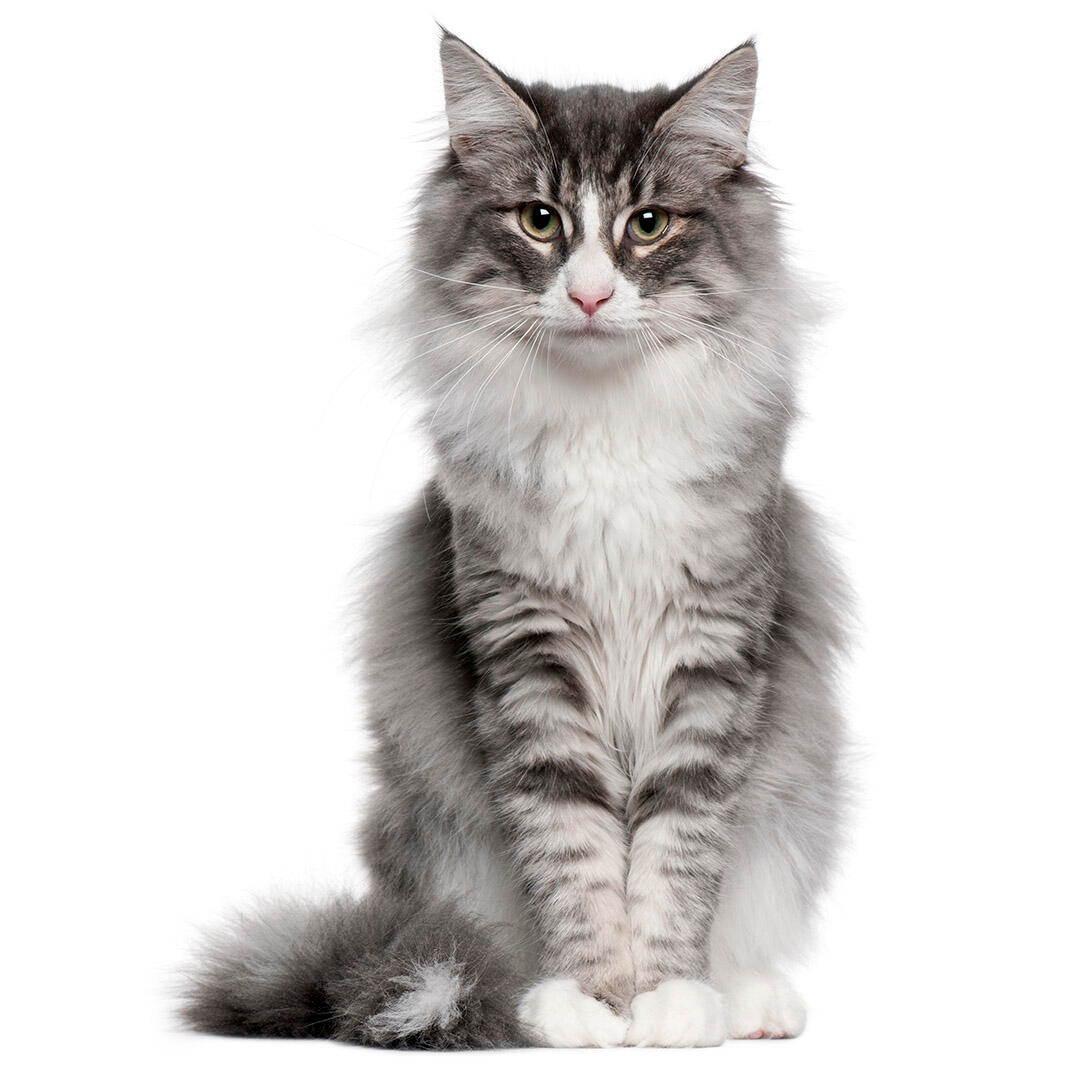
Credit: www.purina.co.uk
Comparing Norwegian Forest Cats With Other Breeds
Comparing Norwegian Forest Cats with Other Breeds reveals unique traits of these majestic felines. These comparisons spotlight differences and help owners identify their beloved pets. Let’s delve into the characteristics that distinguish a Norwegian Forest Cat.
Maine Coon Vs. Norwegian Forest Cat
These two breeds often confuse cat enthusiasts. Check these details to tell them apart:
| Feature | Maine Coon | Norwegian Forest Cat |
|---|---|---|
| Size | Larger | Large but sleeker |
| Head Shape | Square | Triangle |
| Ears | Taller, tufted | Large, pointed |
| Coat | Shaggy, water-repellent | Dense, water-repellent |
| Tail | Long, bushy | Long, bushy |
Maine Coons have a more robust build with rectangular body shape. Norwegian Forest Cats, known as ‘Wegies’, show a more elegant body. Both breeds share long, bushy tails and muzzle tufts, but the ear tips of a ‘Maine Coon’ are often more pronounced.
Differences From The Common Domestic Cat
Norwegian Forest Cats stand out with these traits:
- Sturdier Body: Wegies have a powerful build.
- Thicker Coat: Their coat is insulated for cold climates.
- Moderate Activity: Less hyper than average cats.
- Friendly Demeanor: They are affectionate and like company.
Their thick, lustrous fur and large, almond-shaped eyes exude a wild charm. Compared to typical house cats, they have long legs and a straight nose profile. This breed’s dense coat requires regular grooming to maintain its splendor.
Health And Lifespan Considerations
Knowing if your cat is a Norwegian Forest Cat can help with health and lifespan planning. These beautiful cats have distinct needs. Proper care ensures a long, happy life.
Common Health Issues
Norwegian Forest Cats are sturdy, but they can face health challenges:
- Hip dysplasia – A condition that can cause mobility issues.
- Heart diseases – Like hypertrophic cardiomyopathy, which affects the heart’s muscles.
- Glycogen storage disease type IV – A rare genetic disorder that affects metabolism.
Regular vet check-ups help spot these issues early. Early detection makes treatment easier.
Diet And Exercise For Longevity
Longevity in Norwegian Forest Cats depends on diet and exercise:
| Aspect | Recommendation |
|---|---|
| Diet | High protein, balanced fats, and controlled calories. |
| Exercise | Daily interactive play and climbing opportunities. |
Proper nutrition and regular activity keep these cats healthy. This helps prevent obesity, a common health threat.
:strip_icc()/norwegian-forest-cat-4170085-fe84aa86023446c4b64236ddfbdefd2b.jpg)
Credit: www.thesprucepets.com
Adoption Tips: Finding A Norwegian Forest Cat
Seeking to bring a Norwegian Forest Cat into your heart and home? This majestic breed, known for its lush fur and bushy tail, makes an excellent companion. The journey to identify a true Norwegian Forest Cat is filled with steps to ensure authenticity and health. Follow these tips to find a genuine furry friend.
Understanding Breed CertificationsUnderstanding Breed Certifications
Breed certifications are crucial in confirming if your potential cat is a purebred Norwegian Forest Cat. Recognized organizations such as the Cat Fanciers’ Association (CFA) or the International Cat Association (TICA) provide paperwork upon request. These documents verify your cat’s lineage. Ensure the breeder can present these before proceeding.
Questions to Ask the BreederQuestions To Ask The Breeder
Engaging with a breeder directly? Prepare to ask the right questions. Start by inquiring about the parents’ health history and the vaccinations the kitten has received. Below is a checklist:
- Can you show me the breed certifications?
- What tests have the parents undergone for genetic disorders?
- Can I meet the kitten’s parents?
- What vaccinations and treatments has the kitten gotten?
- Do you offer a health guarantee?
Adopting From A Rescue Or Shelter
Shelters and rescues might have Norwegian Forest Cats or mixes available for adoption. To increase the chances of finding a purebred, target organizations that specialize in this breed. Even without papers, these cats still need loving homes and offer the same affection as certified kittens.
| Approach | Benefits |
|---|---|
| Speciality Rescue Groups | Potentially higher chance of breed authenticity |
| General Shelters | Broader selection, multifaceted adoption benefits |
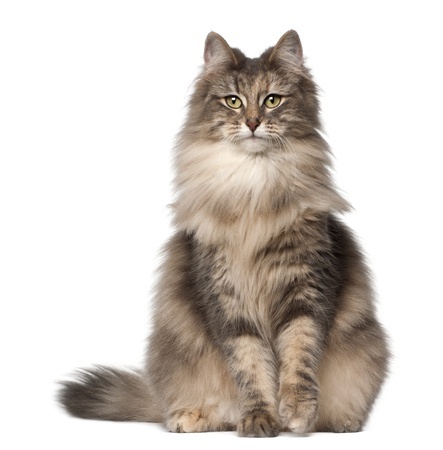
Credit: www.argospetinsurance.co.uk
Frequently Asked Questions For How Do I Know If I Have A Norwegian Forest Cat
How Can You Tell If Your Cat Is A Norwegian Forest Cat?
Check for thick, long fur, a bushy tail, and a sturdy build to identify a Norwegian Forest Cat. Also look for almond-shaped eyes and tufted ears, which are breed hallmarks.
What Are The Markings Of The Norwegian Forest Cat?
Norwegian Forest Cats boast a thick, water-resistant double coat with tufted ears and a bushy tail. Their markings vary widely, including tabby, solid, and bi-colored patterns.
Is Norwegian Forest Cat Rare?
Norwegian Forest Cats are not extremely rare but are less common than other breeds. Breeders exist worldwide, maintaining their presence in the pet market.
What Color Eyes Do Norwegian Forest Cats Have?
Norwegian Forest cats typically have green, gold, or copper-colored eyes. Some may also have blue eyes or odd-colored eyes in cases of white-coated individuals.
Conclusion
Identifying a Norwegian Forest Cat can be quite the adventure, given their unique traits and characteristics. Remember, confirmation lies in observing their thick coat, sturdy build, and sociable nature. Don’t hesitate to consult a vet or breed expert for an accurate assessment.
Embrace the journey of discovery with your furry friend, and cherish the companionship, whether they hail from the forests of Norway or not.

